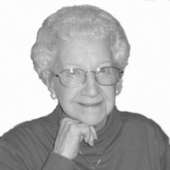- Fort Scott church gets ready to fete 40th anniversary (1/30/13)
- Children, grandchildren welcomed (1/16/13)
- The holidays bring news from far and wide to Arcadia (1/8/13)
- Christmas dinner held (1/2/13)
- Holiday and family gatherings abound in the Arcadia area during this special time (12/27/12)
- Shead family member helps with Sandy clean-up (12/19/12)
- Holiday happenings: Santa Claus to visit Arcadia (12/12/12)
The fascinating history of the black-eyed pea; Norris moves
Friday, January 25, 2013
Don Stephens, cousin to Mary V. Shead of Arcadia, recently sent her an article about "Eating Black-Eyed Peas on New Year's Day-The History."
If you grew up in the South, then you can relate. I grew up with this belief, but did not know the real reason. My mother always served black-eyed peas on New Year's Day, and she said it would bring good luck in the new year.
I've carried this tradition forward, but never knew the reason behind it. It became a way of remembrance of my mother and grandmother.
"Black-Eyed Peas: The Real Story," is much more interesting and has gone untold in fear that feelings would be hurt. It's a story of war, the most brutal and bloody war in U.S history. Military might and power pushed upon civilians, women, children and elderly. Never seen as a war crime, this was the policy of the greatest nation on earth trying to maintain that status at all costs.
An unhealed wound remains in the hearts of some people of the southern states, even today.
The story of "The Black-Eyed Pea" being considered good luck relates directly back to Sherman's bloody March to the Sea in late 1864. It was called "The Savannah Campaign" and was led by Maj. Gen. William T. Sherman. The Civil War campaign began on Nov. 15, 1864, when Sherman's troops marched from the captured city of Atlanta, Ga., and ended at the port of Savannah on Dec. 22, 1864.
When the smoke cleared, the Southerners who had survived the onslaught came out of hiding. They found that the blue-belly aggressors had looted and stolen everything of value, and everything you could eat, all crops trampled, all seed they could find destroyed, and all livestock stolen or killed.
Death and destruction were everywhere. While in hiding, few had enough to eat, and starvation was now upon the survivors.
There was no international aid, no Red Cross meal trucks. The northern army had taken everything they could carry and eaten everything they could eat.
But they couldn't take it all. The devastated people of the South found for some unknown reason that Sherman's blood-thirsty troops had left silos full of black-eyed peas. At the time in the north, the lowly black-eyed pea was only used to feed livestock.
The northern troops saw it as the thing of least value. Taking grain for their horses and livestock and other crops to feed themselves, they just couldn't take everything. So they left the black-eyed peas in great quantities, assuming it would be of no use to the survivors, since all the livestock it could feed had either been taken, eaten or killed.
Southerners awoke to face a new year in this devastation and were facing massive starvation if not for the good luck of having the black-eyed peas to eat.
From New Year's Day 1866 forward, the tradition grew for true Southerners to eat black-eyed peas on New Year's Day for good luck.
But remember, "There's no such thing as luck. God is still in control!"
Word was received that Howard Holland, of Lamar, had surgery and it went well. The doctor said he has a strong heart.
Mary V. Shead spent a few days in Mercy Hospital due to an infection. While there, two of her caregivers were Stephanie Lockwood of Fort Scott and Nerissa Antonio who is from the Philippines. Mary V's son, Larry, had become acquainted with these two ladies at Fort Scott Community College.
Clayton Whitson, of Tulsa, Okla., is finishing writing curriculum for a 10-week family preparedness training. He and his wife, Maria, will be presenting this curriculum as a Sunday School class at Victory Christian Center in Tulsa. Maria is the daughter of Larry and Vickie Shead.
The Presbyterian Village Chili Cook-off was held at 2401 S. Horton in Fort Scott. Any age could enter by bringing a large covered Crock-Pot of chili and their recipe. Prizes were given for the first three places, $100, $50, and $25, respectively.
Mary V. Shead recently noticed in the Fort Scott Tribune that Norris Heating and Air Conditioning had moved to a downtown location at 519 National. She recalled that Norris had installed her furnace at her home in Arcadia in 1985.

